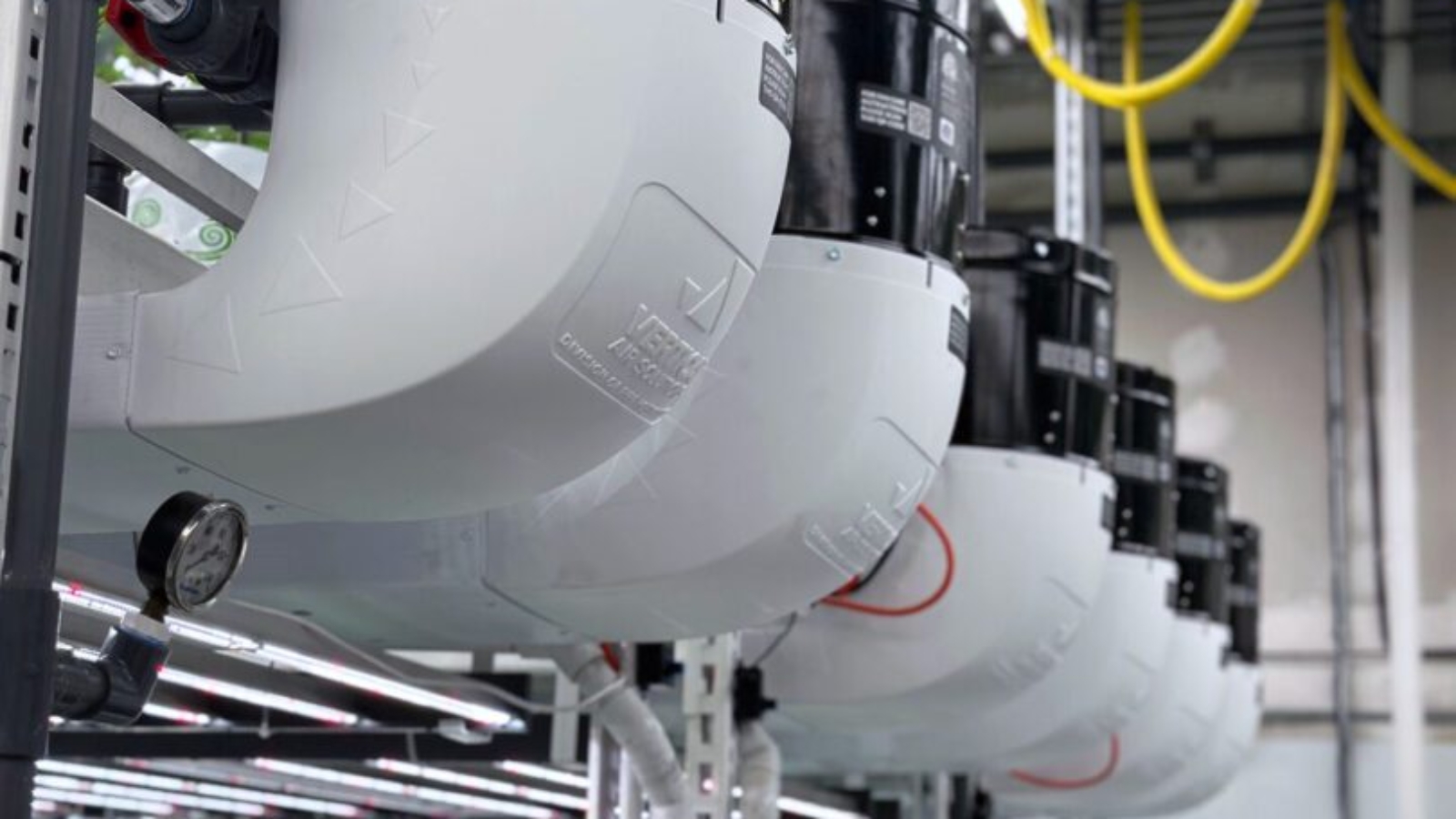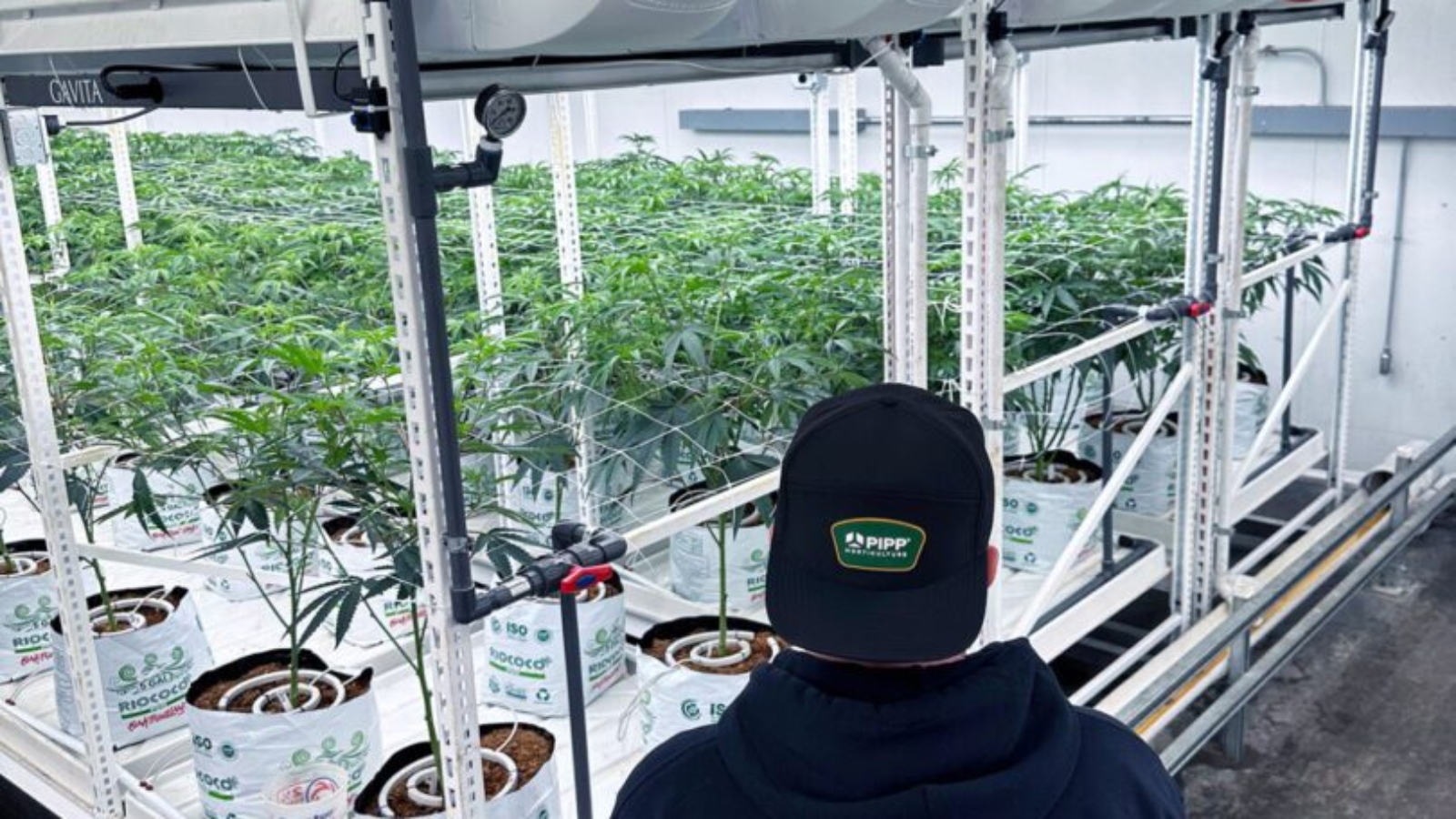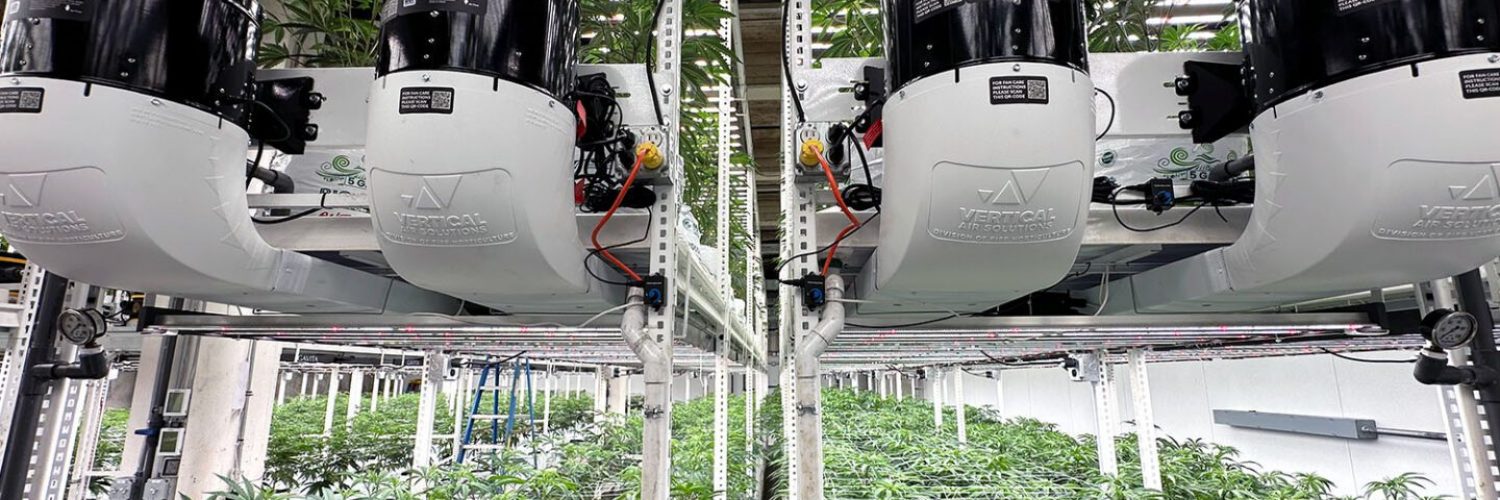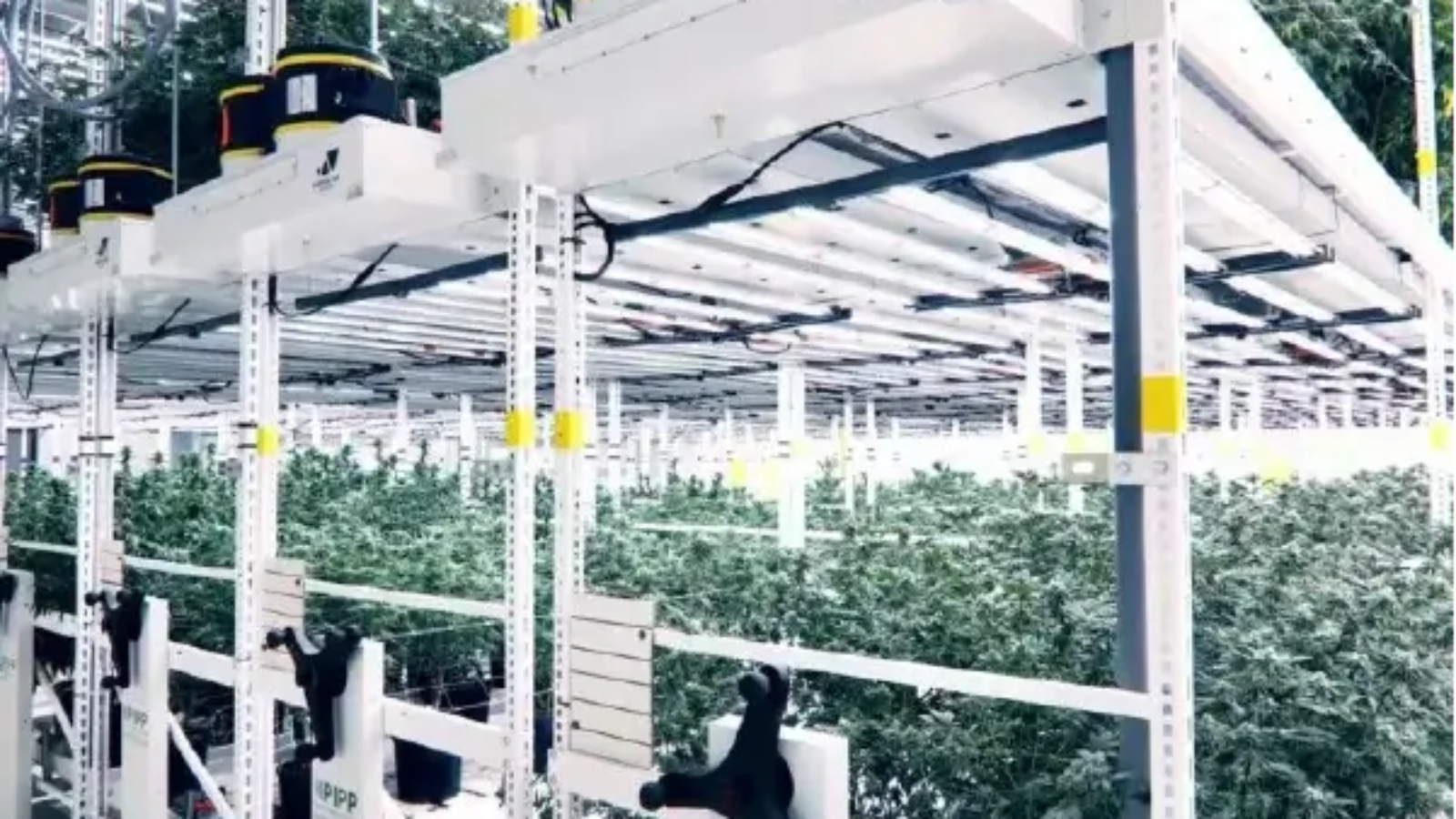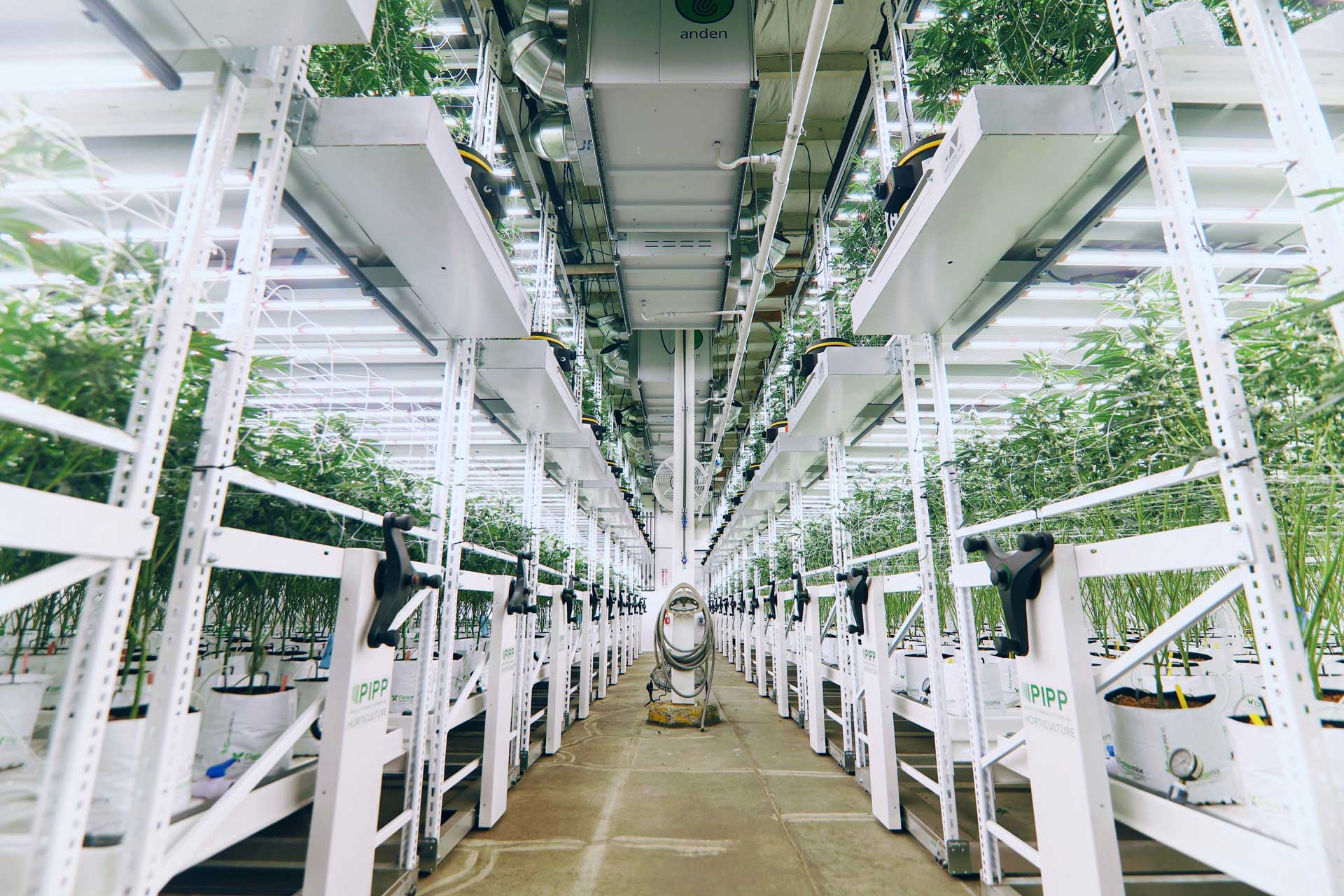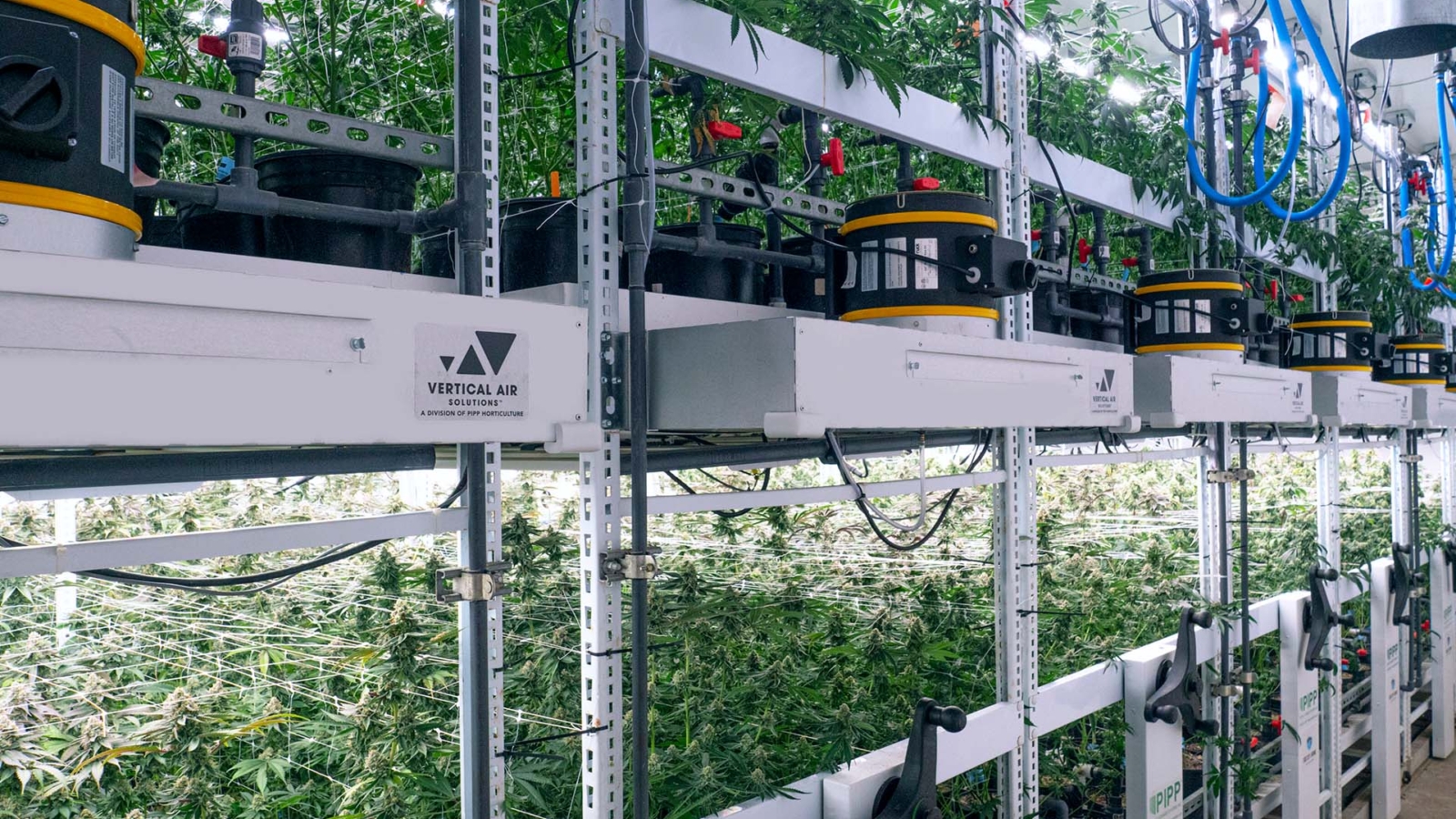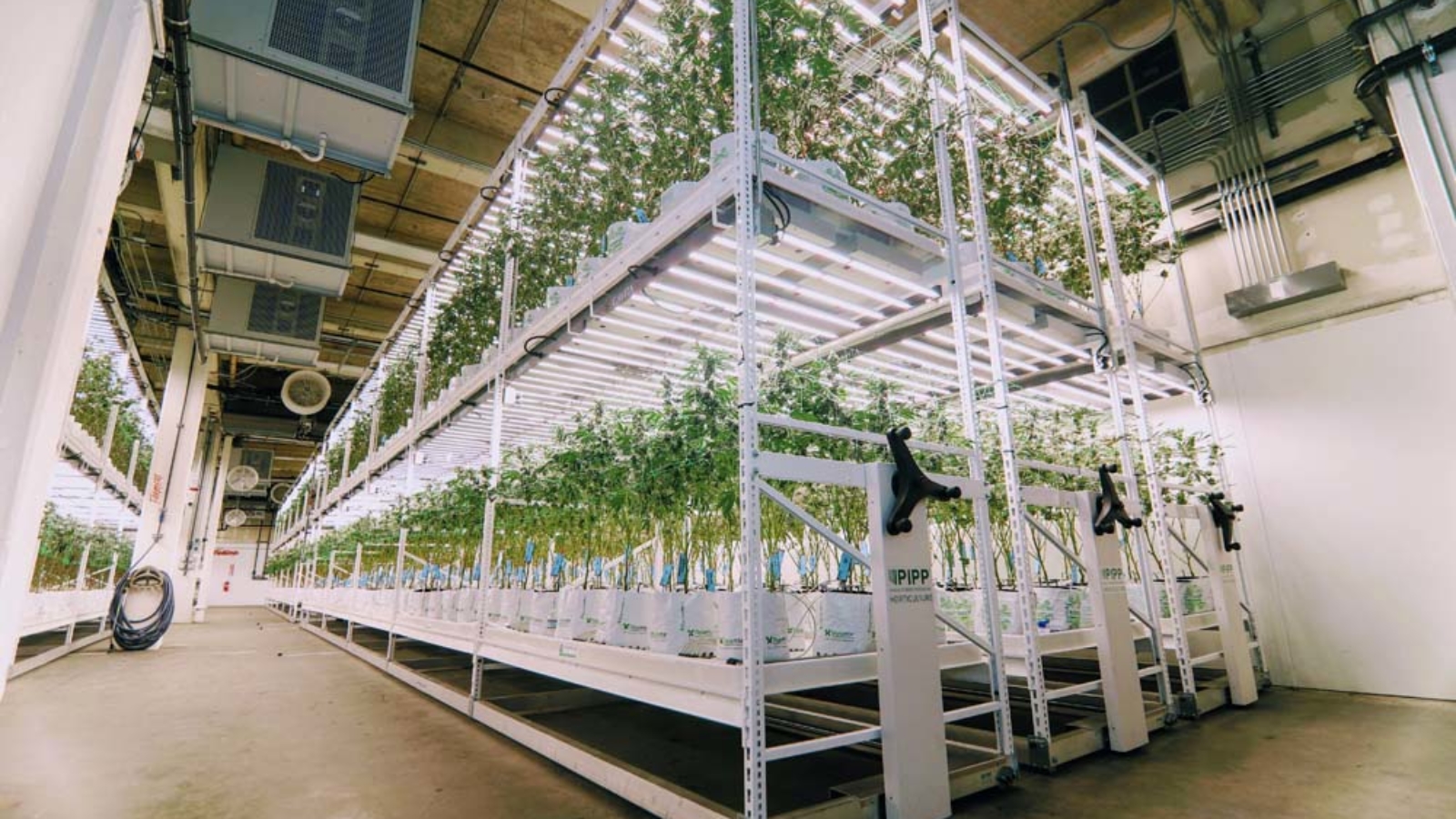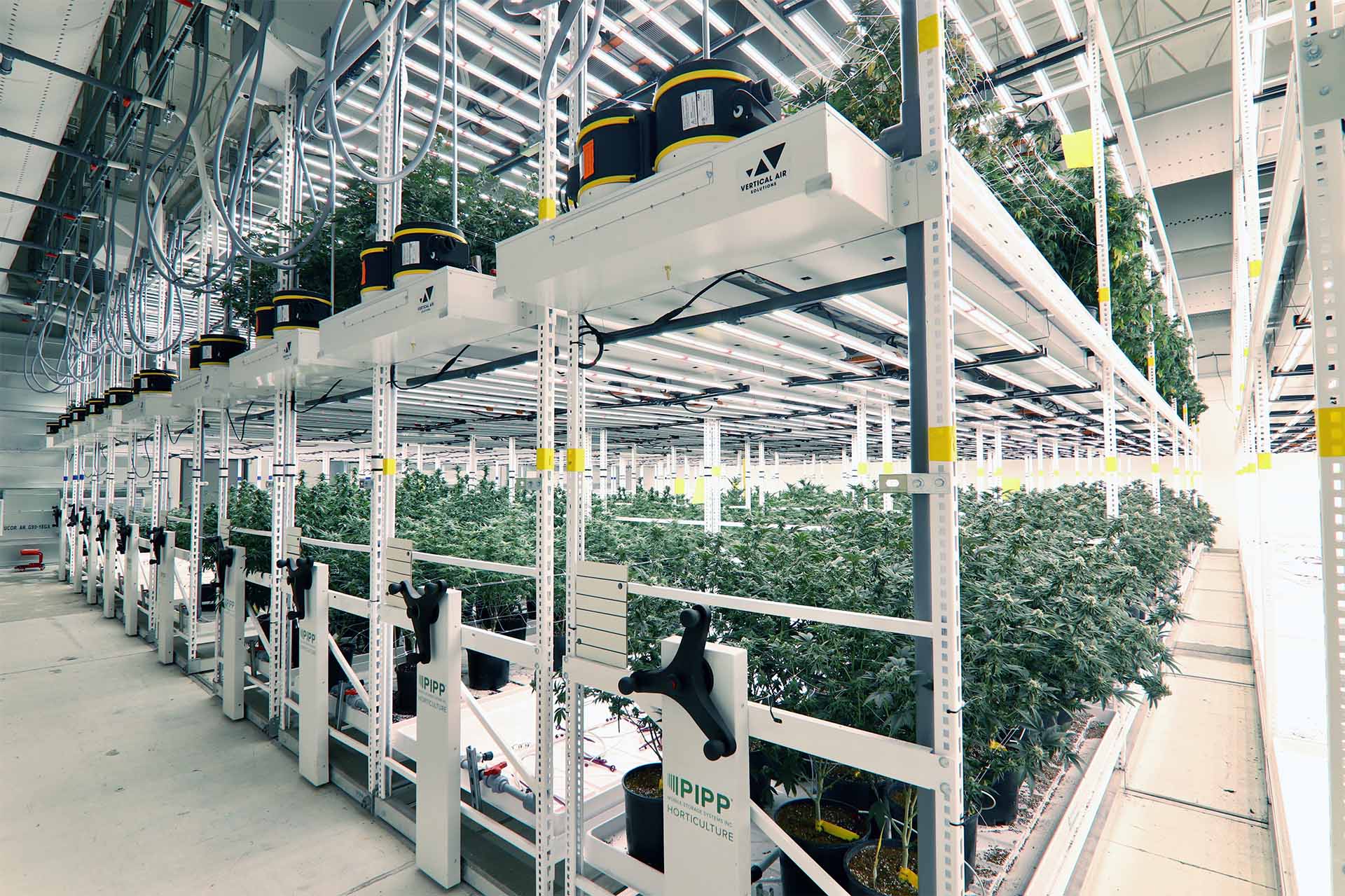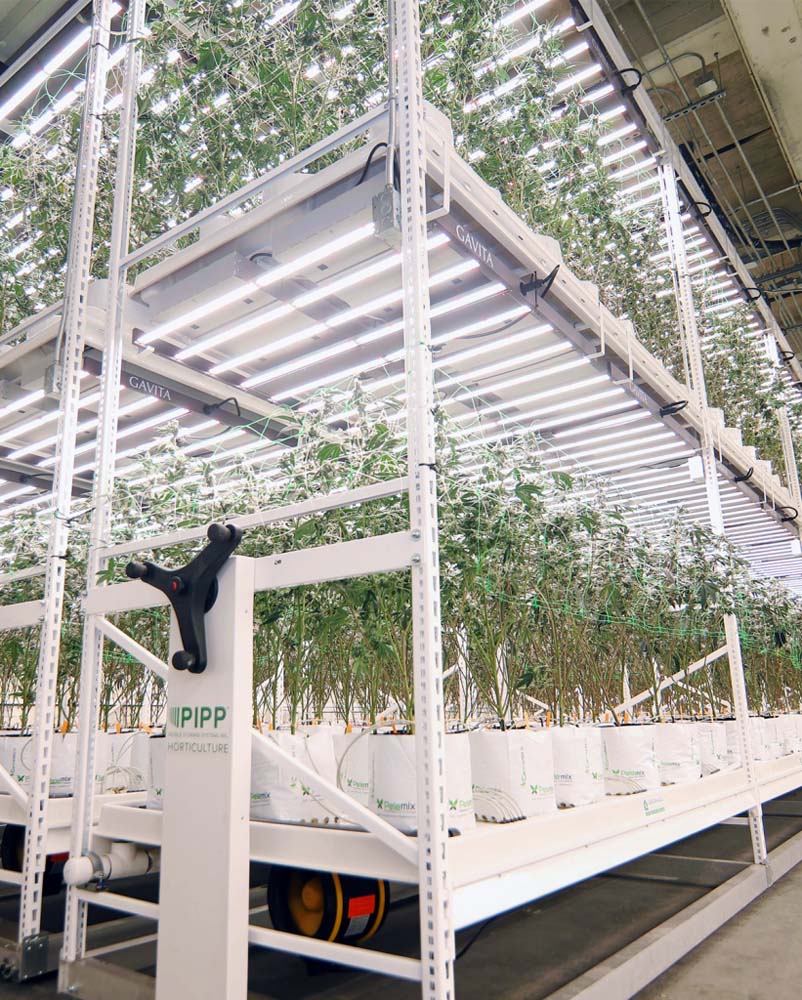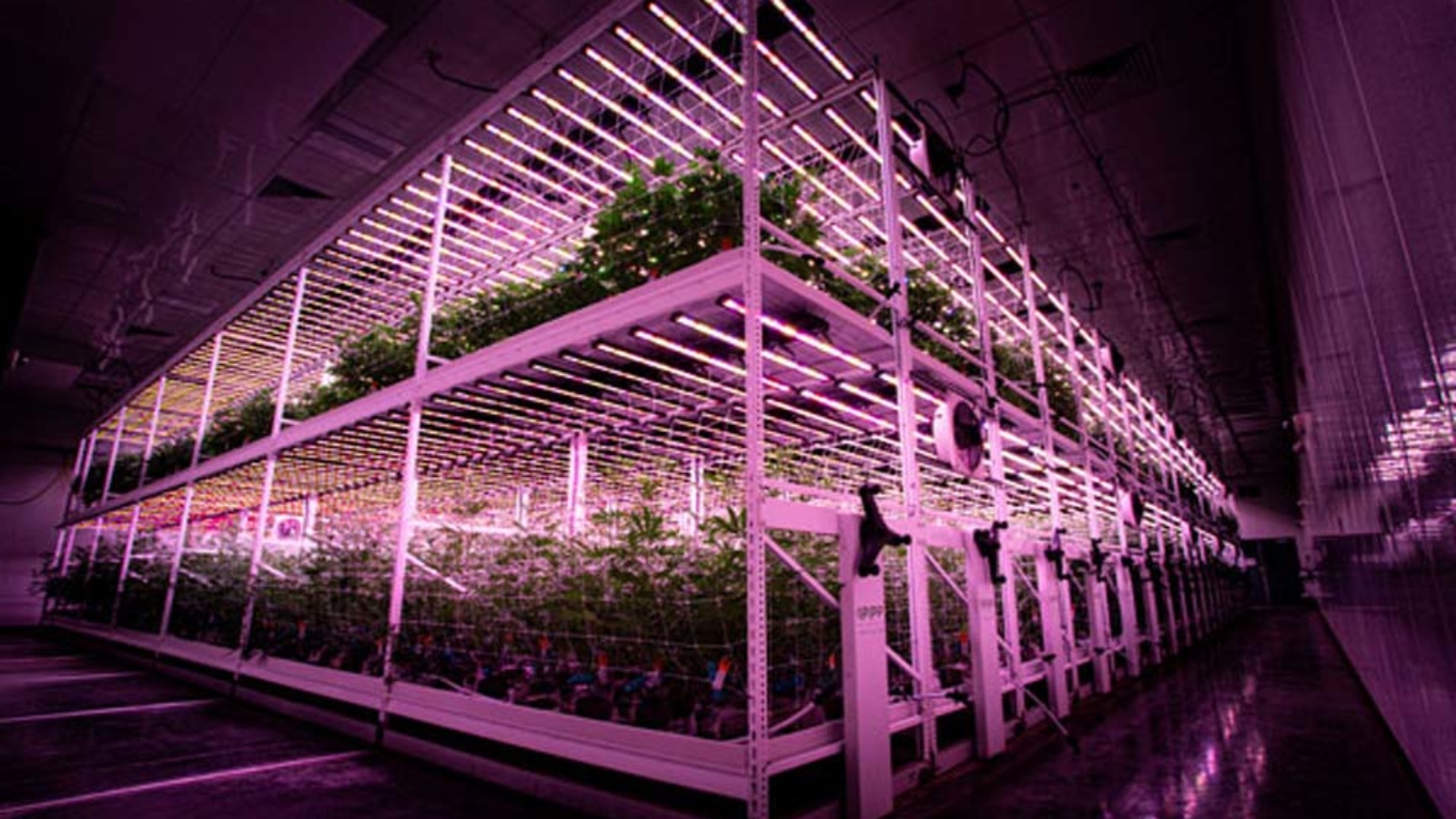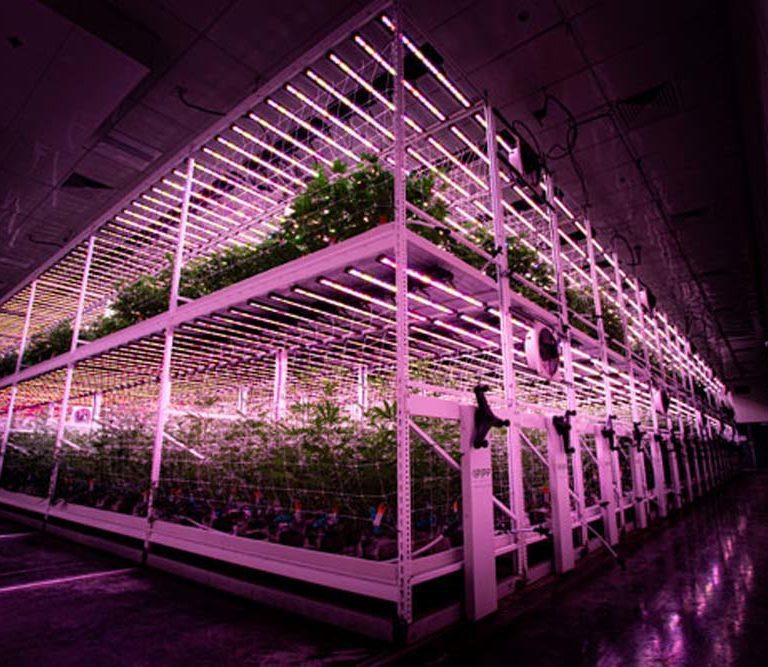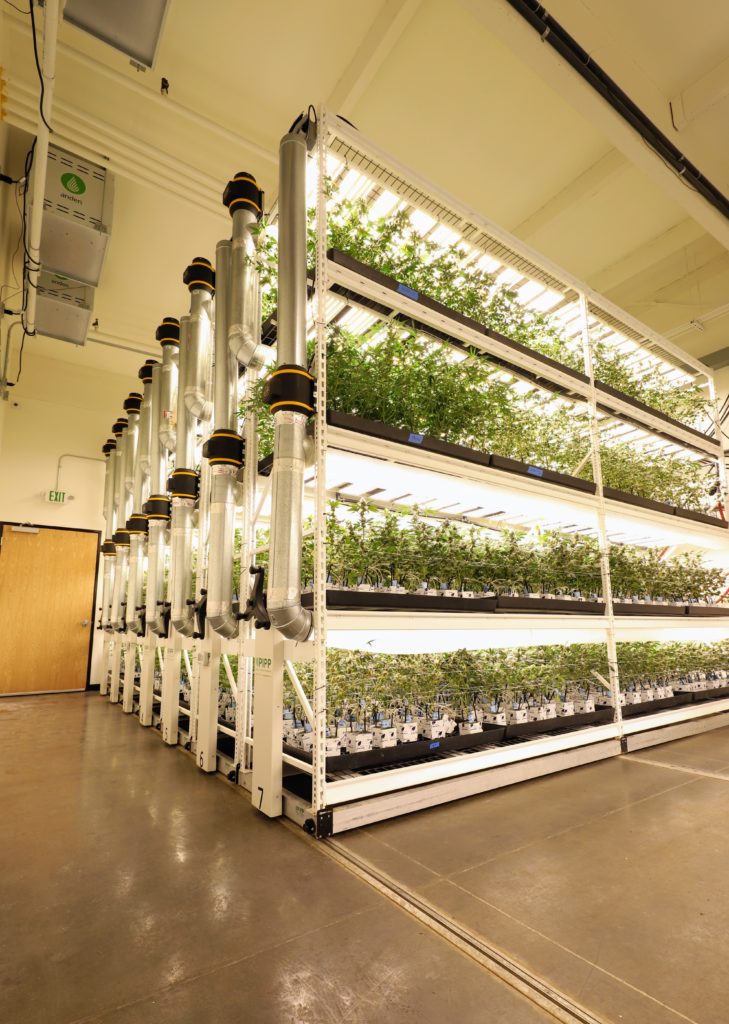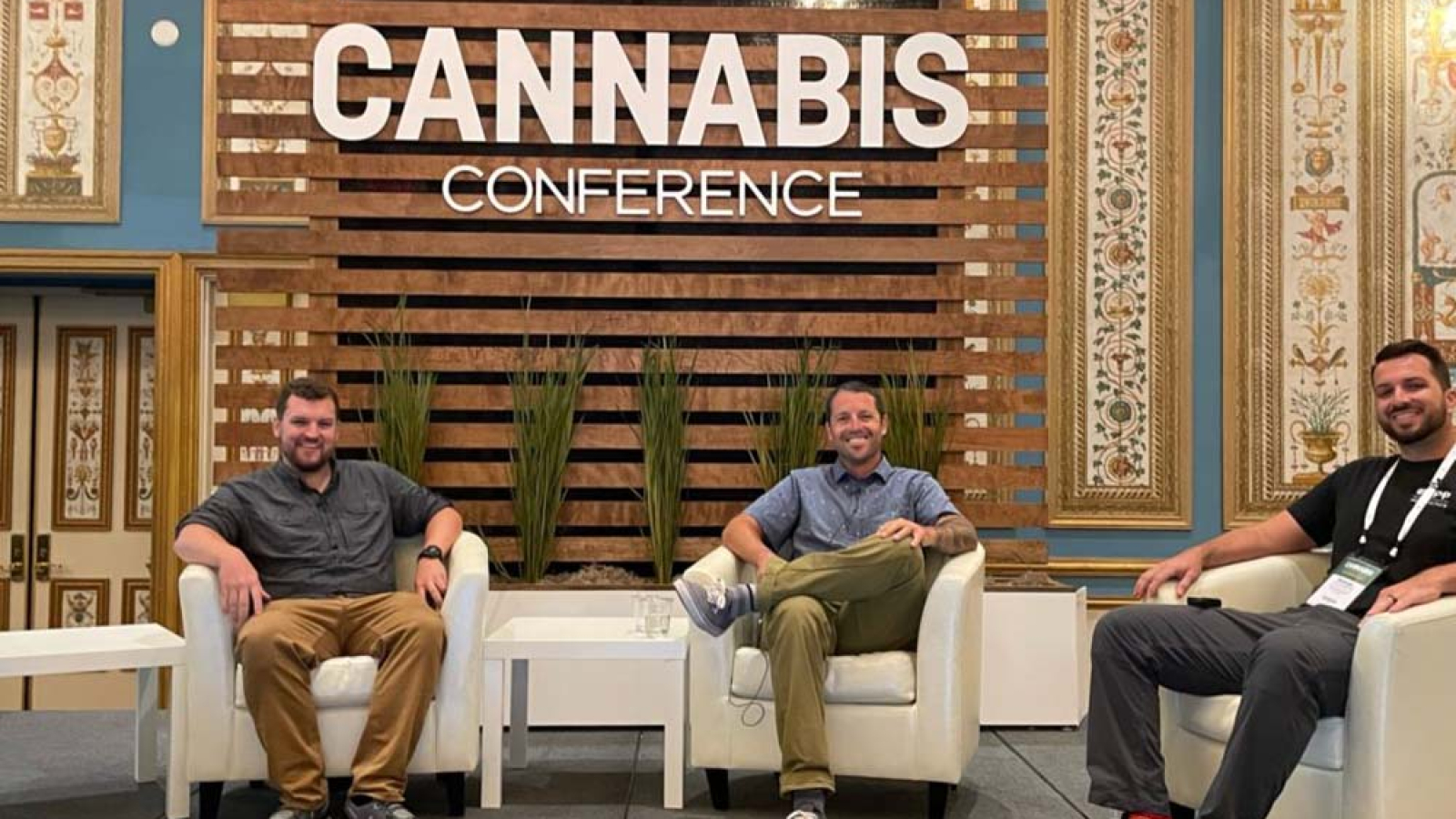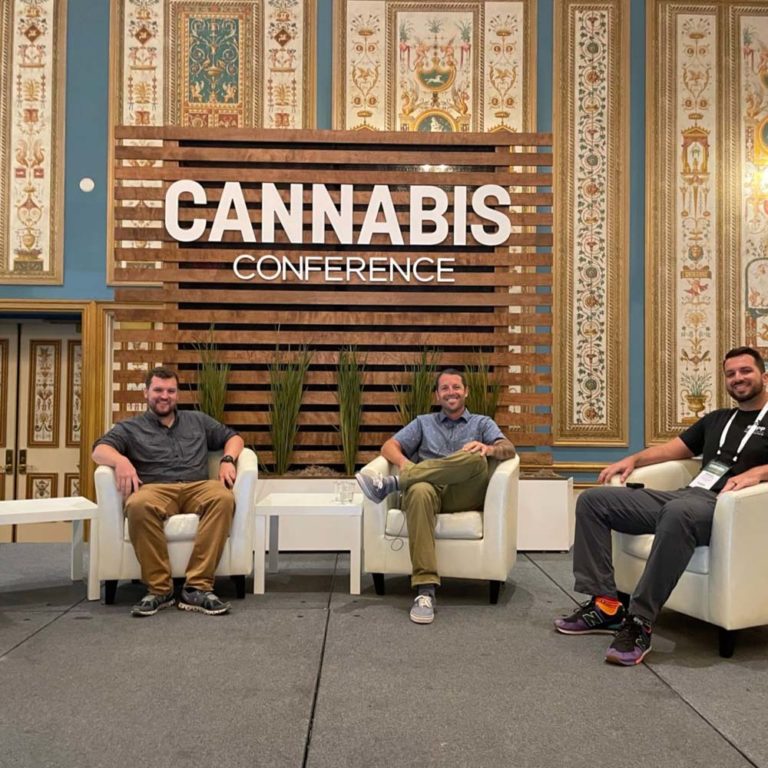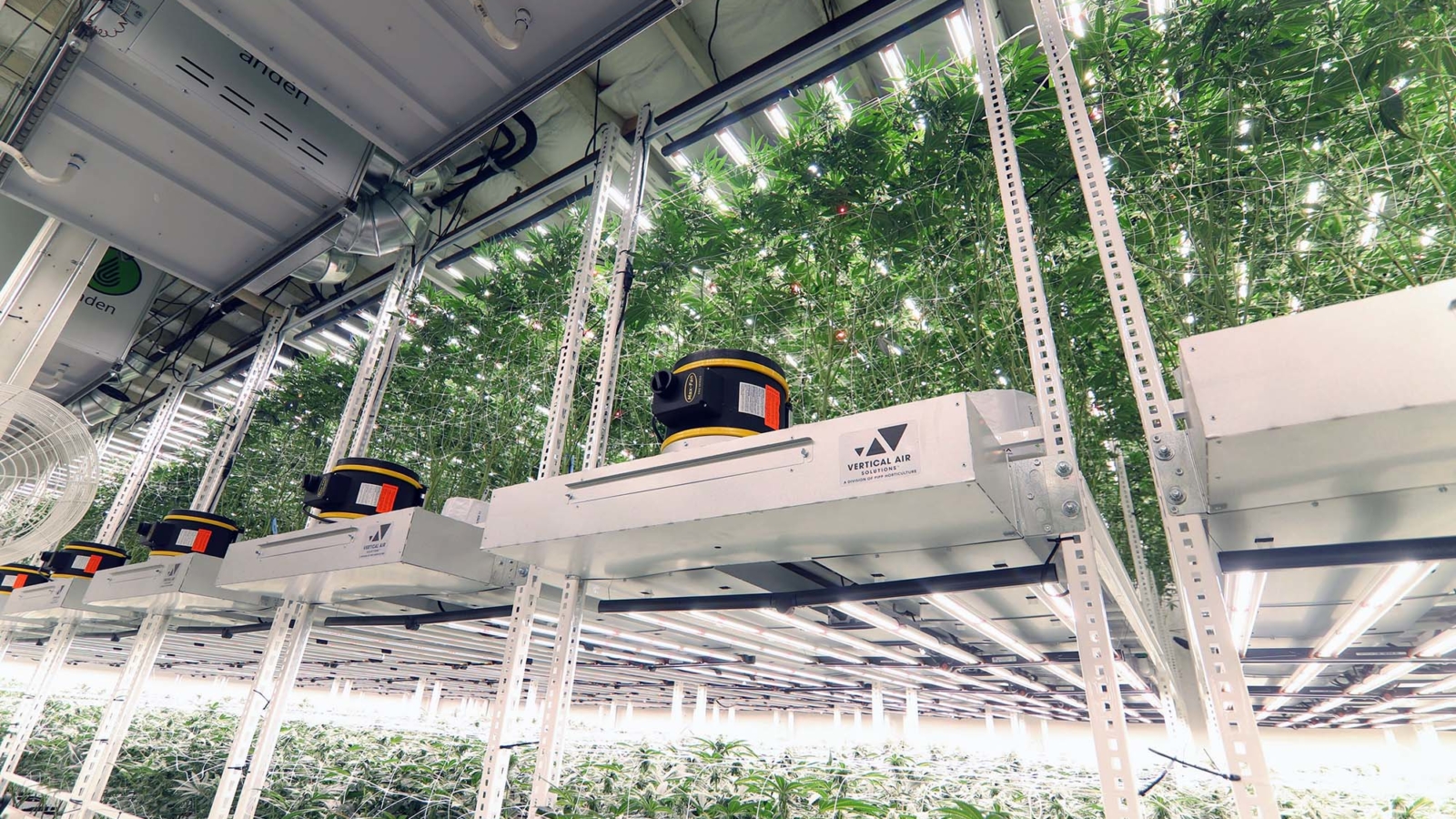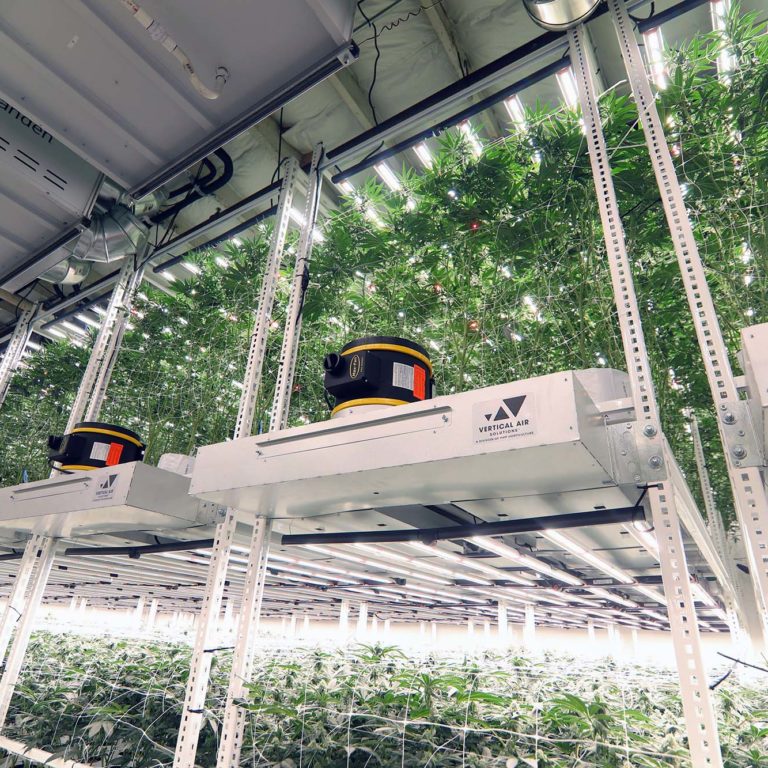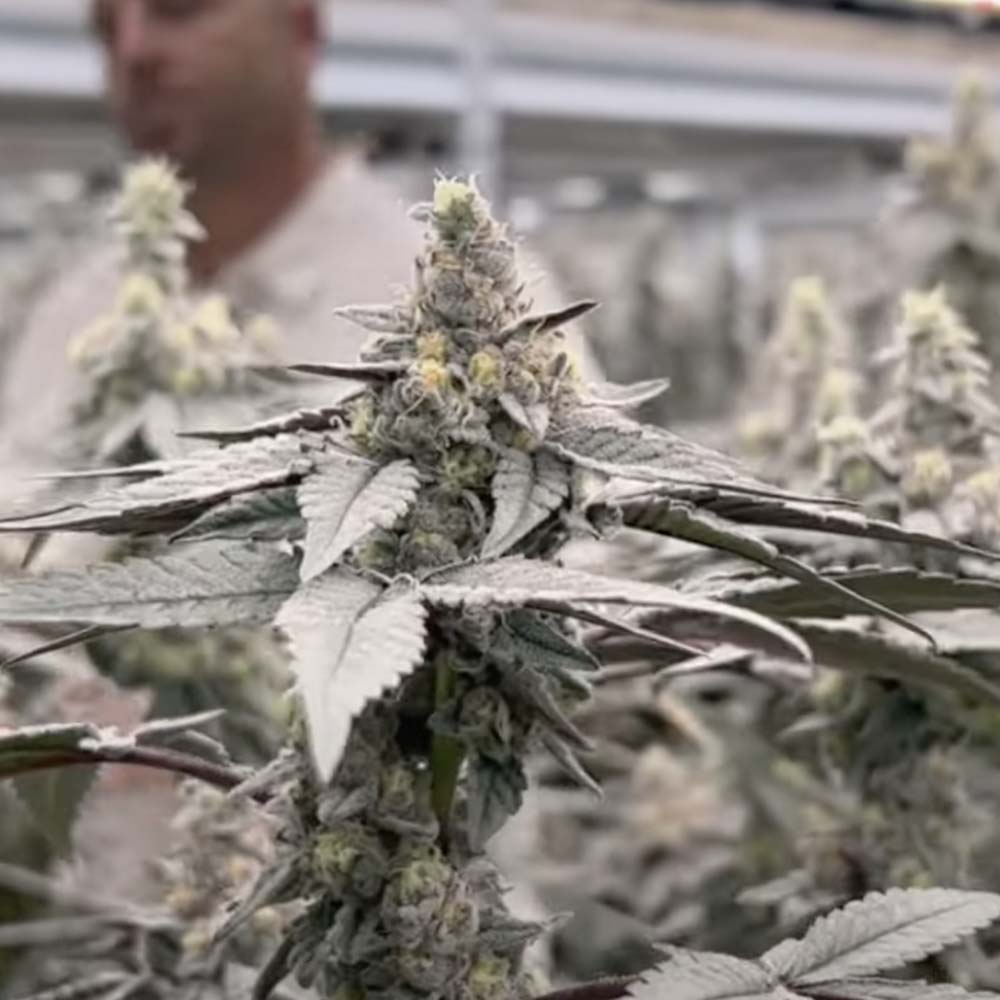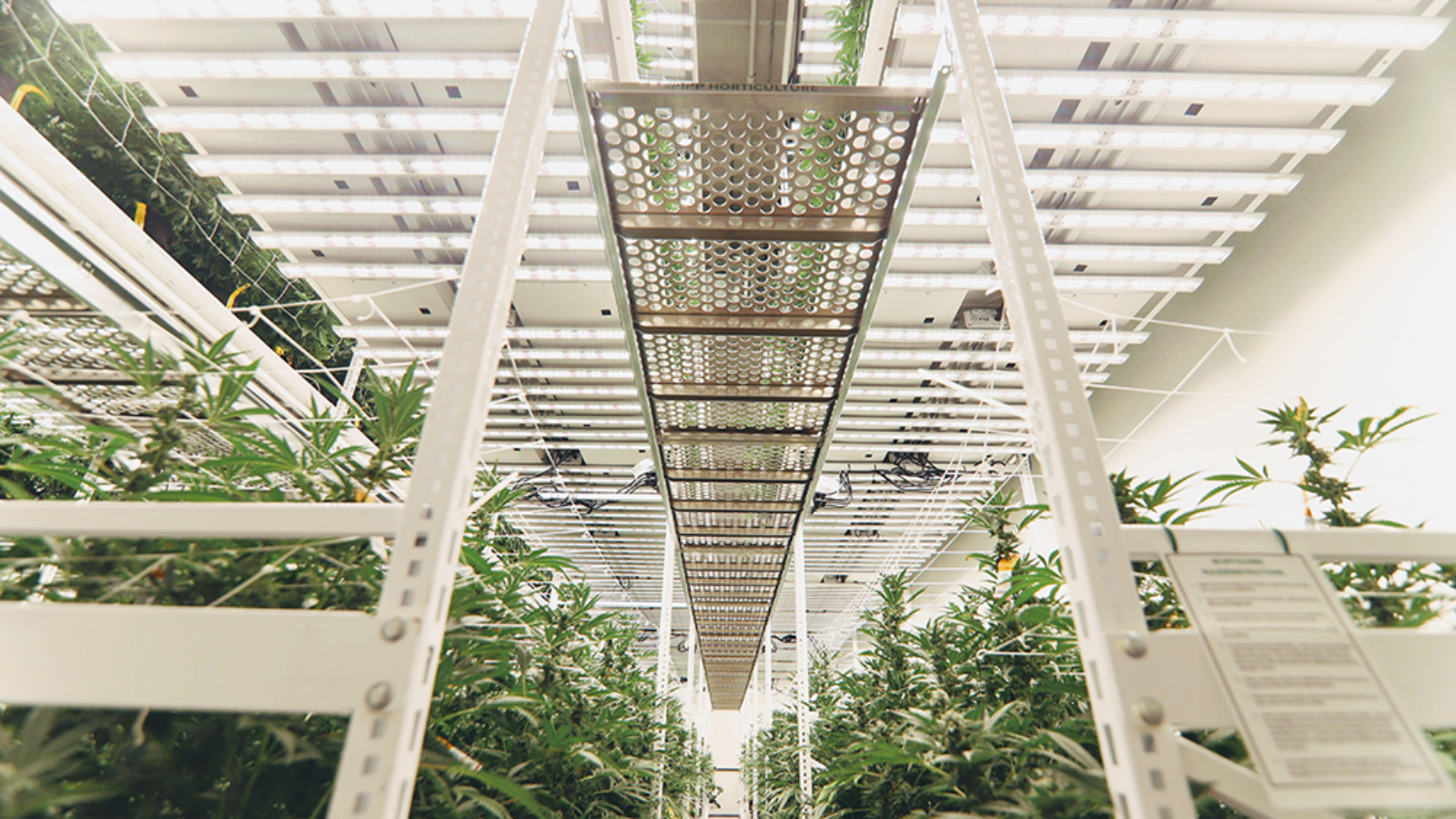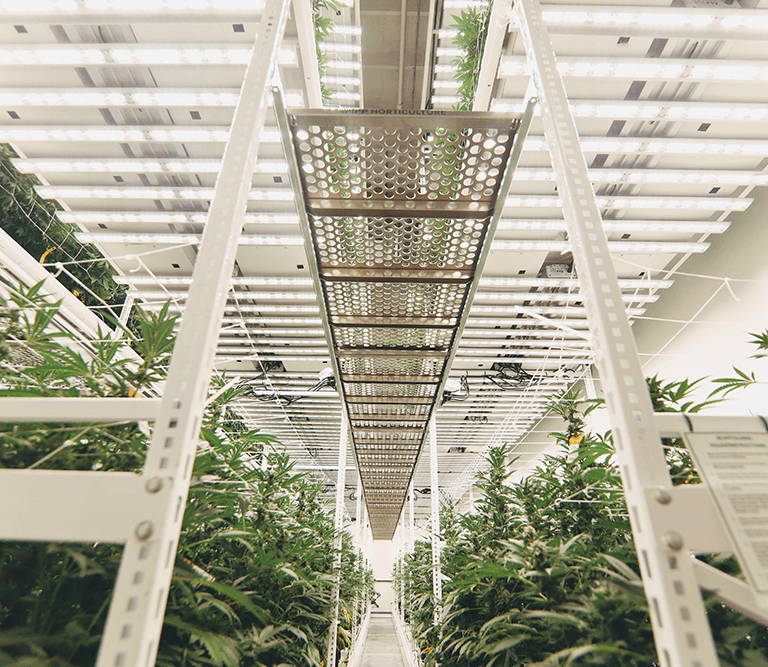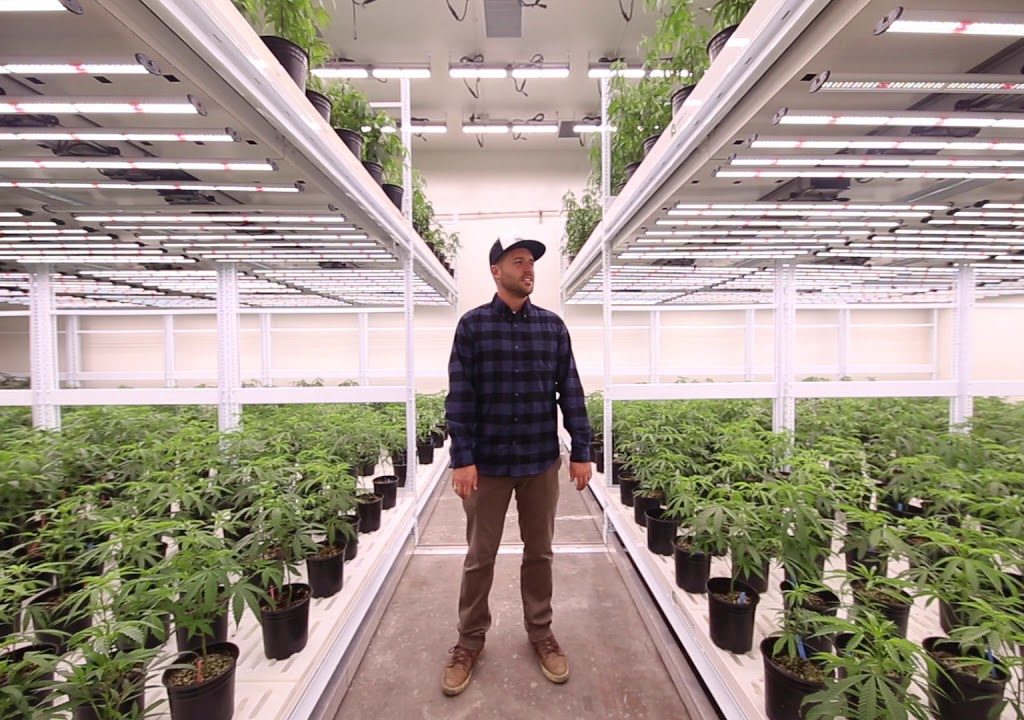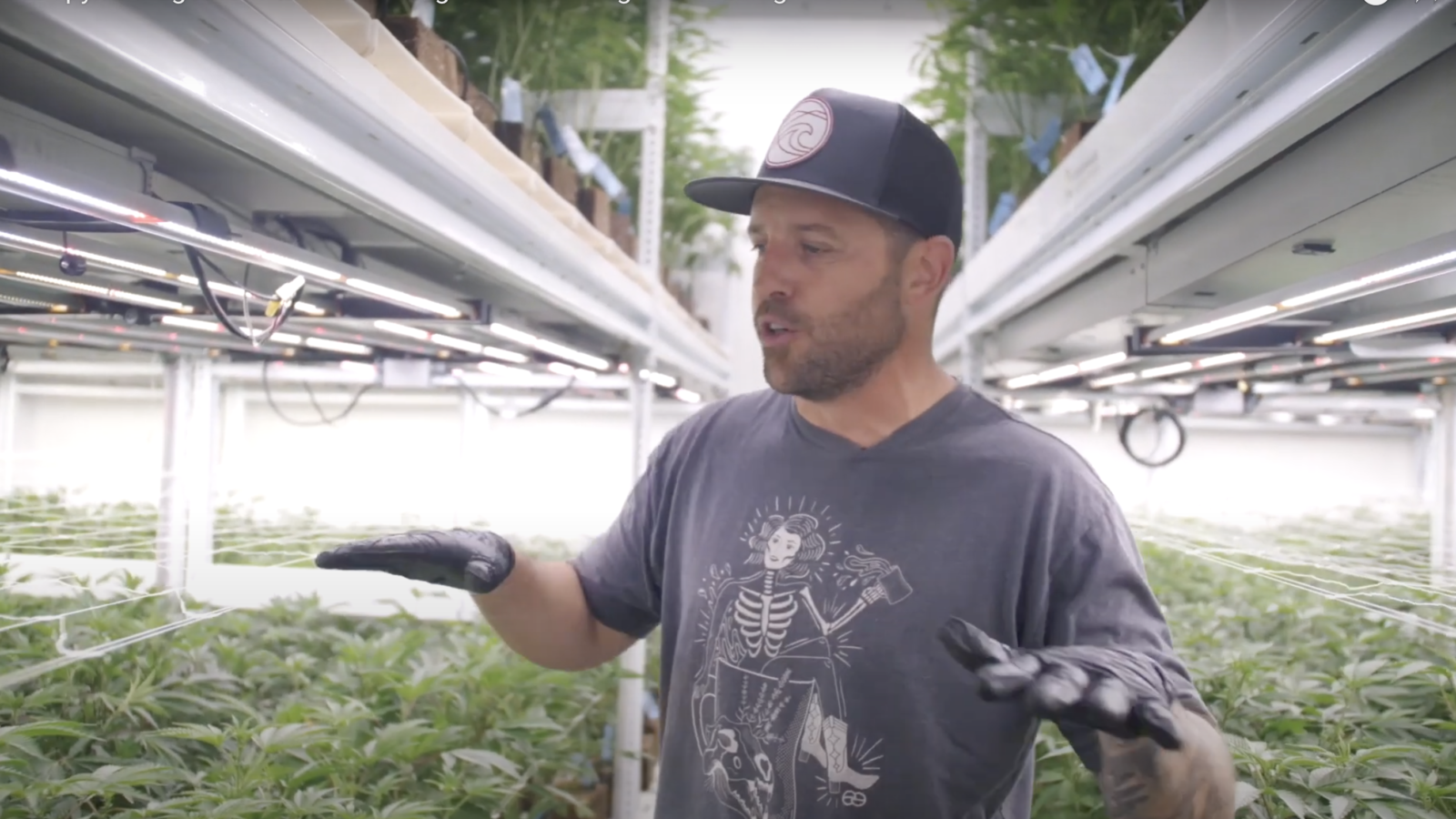Why the VAS 2.0 Is the Best Airflow System for Your Vertical Farm
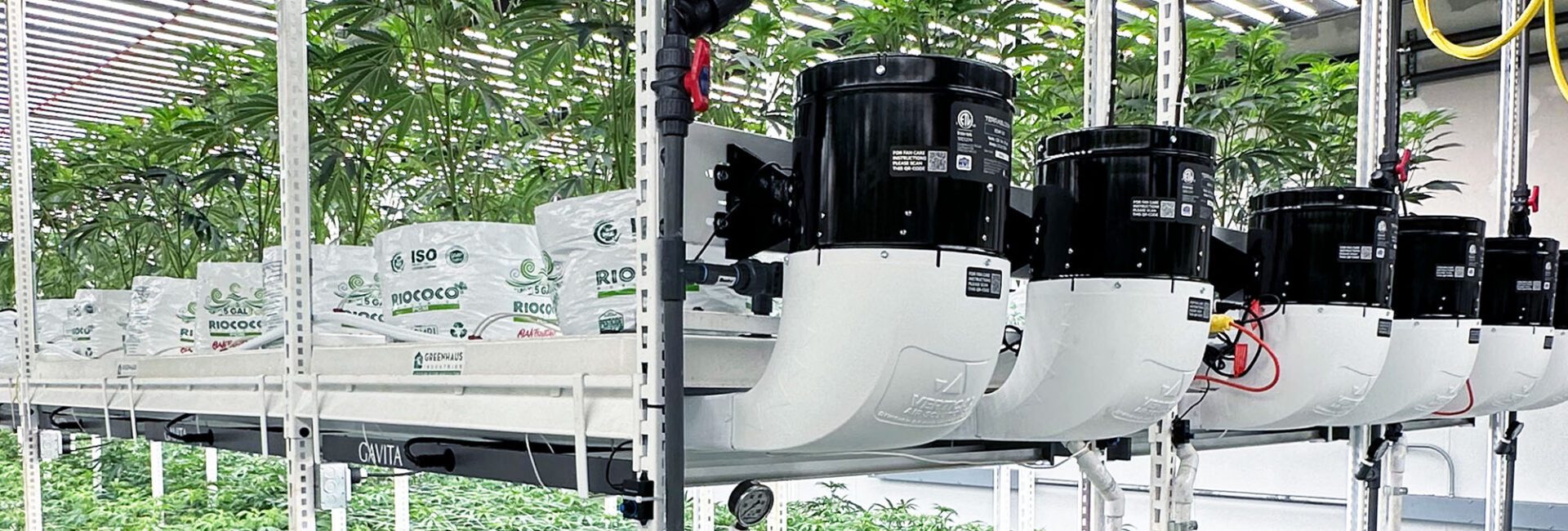
The Future of Airflow Technology
In vertical farming applications, effective and consistent airflow is crucial for your crops to thrive. Many of the airflow solutions available today, such as fixed or oscillating fans, provide uneven air movement or fall short of delivering adequate air velocities. Vertical Air Solutions 2.0 system was designed to solve this problem with a wide range of consistent air speeds for any crop while working hand-in-hand with your HVAC system. The first purpose-built in-rack air circulation system of its kind, the VAS 2.0 was developed by growers, for growers. Here’s an in-depth look at why the VAS 2.0 system is the best choice for your vertical farm and how this innovative technology can boost the performance of your crop.
Why Airflow is Crucial in Vertical Farms
In vertical farming, the cultivation of crops in stacked layers elevates the risk of microclimate development. Microclimates, small areas with differing temperature, humidity, and CO2 levels, can be detrimental to plant growth. Air circulation mitigates microclimates, ensuring uniform growth across all layers and maintaining favorable conditions.
Without proper airflow, your plants will not be able to photosynthesize at their optimal rate therefore reducing overall crop quality and yield. Airflow facilitates gas exchange at the leaf surface, allowing the plant to take in more carbon dioxide (yield), release oxygen, and move transpired water vapor away from the stomata to maintain a vapor pressure deficit. Furthermore, air circulation helps to control pests and pathogens from attacking your crops by creating an unfavorable environment for them to flourish.
While all of the parameters for plant growth are important, airflow is the equalizer that balances and ties everything together. Oftentimes, airflow is the greatest limiting factor to plant growth in vertical farms, but that has now become a thing of the past with the introduction of the new VAS 2.0 air circulation system by Pipp Horticulture.
Why Choose Vertical Air Solutions?
As pioneers in in-rack airflow technology, Vertical Air Solutions leads the industry with hundreds of successful installations worldwide. . Our products have the unique ability to deliver consistent, yet an easily adjustable amount of airflow over the entire plant canopy at all grow levels. Top producers globally have seamlessly integrated VAS into their vertical grow platforms to ensure optimal plant health.
The VAS 2.0 Offers Innovative Technology
The latest innovation in airflow systems by Vertical Air Solutions has arrived. In the 2.0 version, each component has been fully redesigned and improved. The VAS 2.0 delivers the highest air velocities possible while maintaining consistent performance across varying row lengths.
New materials and construction methods were carefully chosen to reduce costs and make installation hassle-free, all without sacrificing quality. With highly adjustable configurations, this system was designed to meet the airflow needs of your crop.
The VAS 2.0 allows for the purest possible airflow and is visually appealing and discreet. This system is easy to install and fits a wide range of rack lengths and canopy spacing. It delivers the airflow your plants need to thrive while saving valuable space in your vertical farm.
Benefits of the VAS 2.0 System
There are many benefits to integrating the VAS 2.0 system. Here are some of the ways this technology will improve your vertical farm:
- Increased Consistency: Stabilizes environmental factors such as temperature, humidity, and CO2 levels for increased growth rates and consistent yields.
- Enhanced Crop Health: More consistent environmental conditions help promote plant growth while decreasing the risk of mold and disease.
- Vertical Airflow: Strategic vertical airflow can ensure uniform temperature, humidity, and CO2 throughout your entire grow space.
- Space-Saving Design: Our new system is compact and sleek. With the thinnest form factor on the market, it fits seamlessly into most vertical racking systems while providing superior performance.
- Increased savings: This energy-efficient system maximizes air circulation while minimizing power consumption, making it cost-effective and sustainable.
- Customizable Control: Our system is highly adjustable, so you can tailor the airflow to meet your plants’ unique needs.
- Dependability: Invented and field-tested by growers, this system is proven and reliable.
In conclusion, the VAS 2.0 system stands as the pinnacle solution for ensuring the success of your vertical farm. With its innovative technology, dependable performance, and an array of benefits, the VAS 2.0 system assures healthier and more consistent crop yields. Moreover, this system’s reliability is backed by its development and field-testing by growers, guaranteeing dependable performance. Embrace this cutting-edge in-rack airflow system and witness your vertical farm flourish like never before.

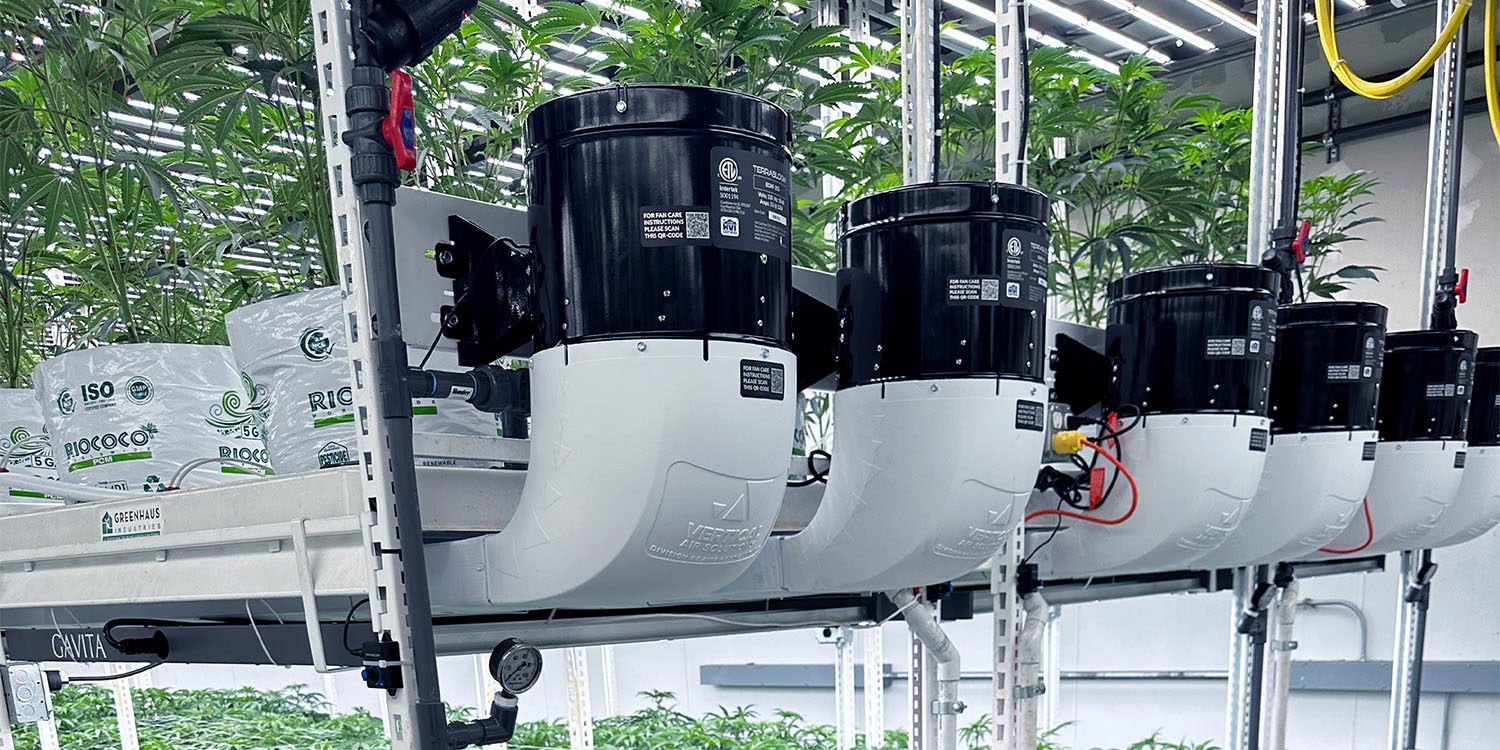




(Left) Original VAS System | (Right) VAS 2.0 System
